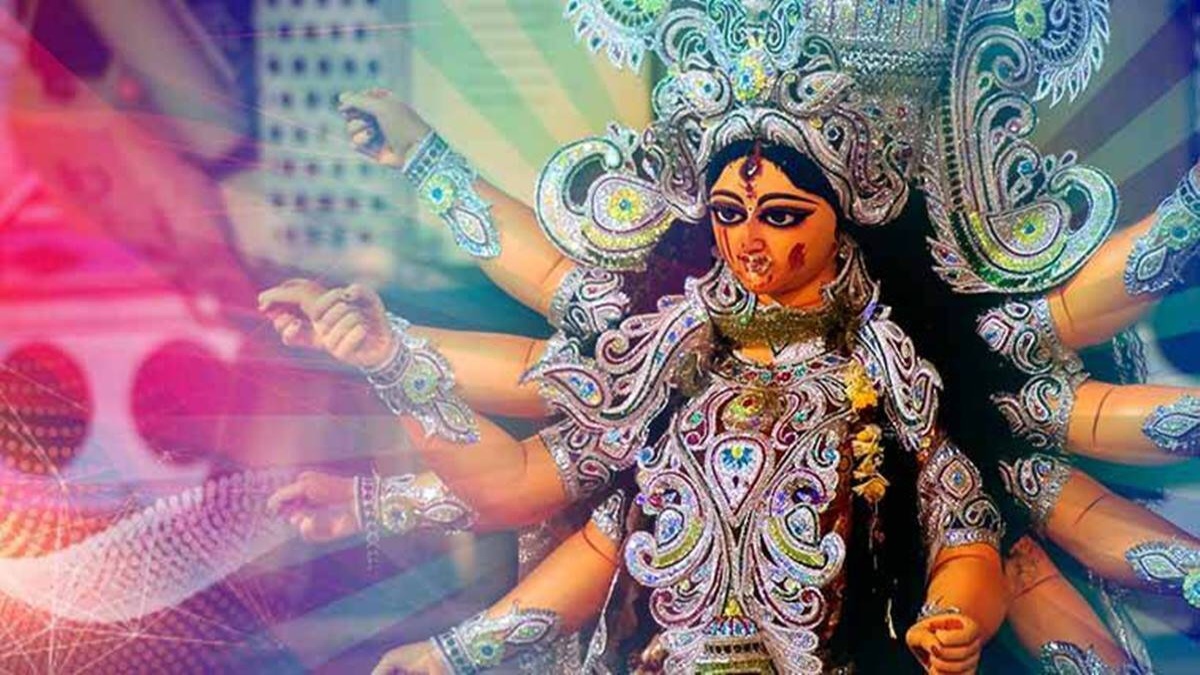


The 9-day-long festival of Shardiya Navratri, dedicated to Maa Durga and her nine avatars, began on Monday, marking the first day of the festivity (Kalash or Ghatsthapna). The festival is celebrated with great fervour all across the country by Hindus.
It is intended for the worship of Maa Durga and her nine avatars, known as Navdurga. Navratri means ‘nine nights’ in Sanskrit. Hindus observe a total of four Navratris throughout the year. Only two of them, Chaitra Navaratri and Shardiya Navaratri, saw widespread celebrations, as they coincided with the beginnings of the seasons.
From Ashwin Shukla Paksha’s Navami until the Pratipada, Shardiya Navratri is observed. While the holiday is celebrated with great fanfare across the nation, distinct traditions are more commonly practised in different states.
Timeline
This year, Navratri will last nine days, starting on 26 September and concluding on 5 October.
History:
The festival of Navratri honours the defeat of the demonic Mahishasura and the triumph of good over evil. Because of Mahishasura’s unwavering devotion to him, Lord Brahma bestows the gift of immortality upon him at the beginning of the narrative.
The blessing did, however, come with one stipulation: only a woman would be able to overcome him. The demon began terrorising people on Earth because he didn’t think any woman would be strong enough to overcome him. The gods were unable to halt him.
Since Mahishasura was to be demolished, Lord Brahma, Lord Vishnu, and Lord Shiva pooled their efforts to create the goddess Durga. They gave her a number of weapons. Ten days passed during Maa Durga and Mahishasura’s conflict. However, Maa Durga was able to overcome him when he at last transformed into a buffalo.
Significance
During the nine-day Navratri festival, devotees worship Maa Durga’s nine incarnations in order to obtain her blessings. There is a goddess manifestation linked with each day of Navratri. During these nine days, people maintain ritualistic fasts, recite shlokas dedicated to each goddess, wear new clothing, offer bhog, and clean their homes. In their prayers, they ask the goddess for her favour in order to have prosperous, joyous, and fulfilled lives.
Ramlila is organised extensively during Navratri in North India, particularly in Uttar Pradesh, Uttarakhand, Haryana, Gujarat, and Madhya Pradesh. During the Ramlila, the tale of Lord Ram’s triumph over Ravana is acted out. The effigies of King Ravana are burned on Dussehra to commemorate the triumph of good over evil.
In fact, on the tenth day of Navratri, also known as Vijayadashami, a large procession is organised during which clay figurines of Maa Durga are ceremoniously submerged in a river, sea, or ocean. Popular places to do this practice include West Bengal, Odisha, Assam, and Bihar. The most significant day for Maa Durga’s worship is thought to be the day of Durga Visarjan.
Celebrations
Numerous dances, including Garba and Dandiya Raas, are performed during the nine-day festival. While Dandiya Raas involves dancing with dandiya sticks to the beat of the music, Garba is a traditional dance in which participants clap their hands and move in a circle while making rhythmic gestures.
In India, Navratri is celebrated in a wide range of ways. Ramlila, a celebration in which scenes from the Ramayana are performed, is organised in North India, mainly in Uttar Pradesh, Uttarakhand, Bihar, and Madhya Pradesh. The burning of King Ravana’s effigies marks the conclusion of the story on Vijaya dashami.